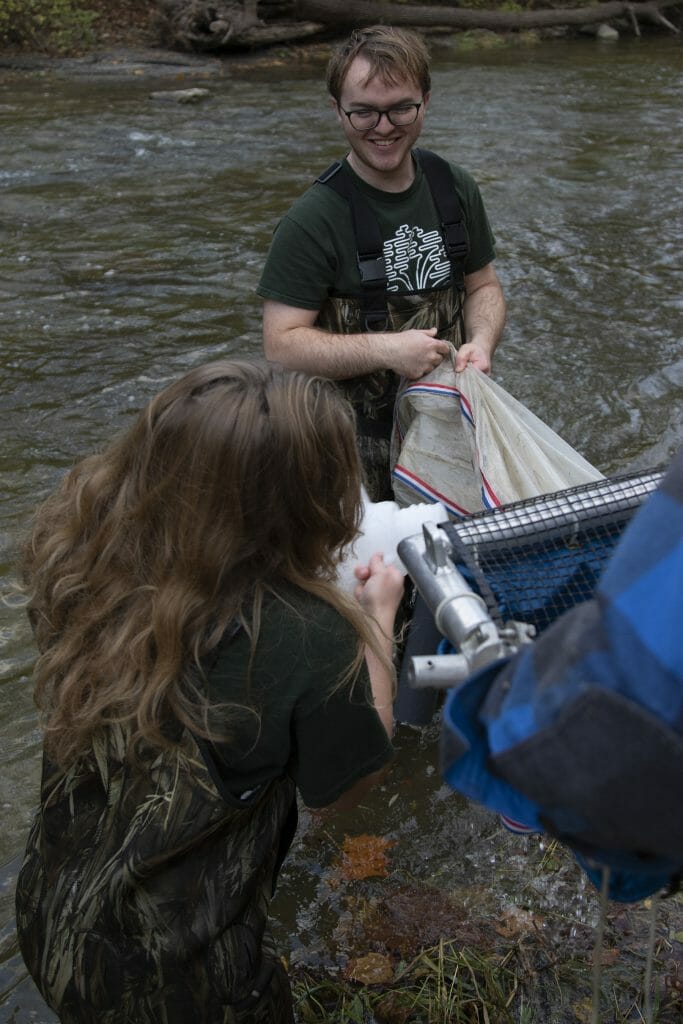Project Made Possible By The H&S Summer Scholars Program & The Dana Intern Program
The H&S Summer Scholars Program provides students in the School of Humanities and Sciences at Ithaca College with a full-time opportunity to engage in a research/scholarly/creative project during the summer with direct and ongoing mentorship by an H&S faculty member. This award is given to high-achieving students through a competitive proposal-based process.
Who I Am
Name: Bruce Franz
Graduation Date: May 2021
Academic Programs: Major: Environmental Science
Background: I am a first-generation rising senior from New Jersey. During my free time, I enjoy hiking, camping, and exploring new coffee shops. During my time at Ithaca, I have focused primarily on research in Susan Allen’s lab. I have been able to make progress on our microplastics project by focusing on Raman Mass Spectroscopy, a way that we can verify that particles in our samples are actually plastic. I have also been a TA for the department for two years. After graduation, I hope to pursue a master’s in public health with a focus on environmental health.

Introduction
Our research lab over the years has grown into a multidisciplinary space for all students to work on a project that matters to them. From plastic reduction advocacy to microplastics, we do it all. So how do we get our work visible? Enter, ictoxlab.com, a one-stop website for everything that we are working on in the lab. When first coming up with the idea I was thinking about how to expand the project, to make it useful for the lab. Our largest project, Microplastics in the Aquatic Environment, has lots of data that is in an excel spreadsheet. So, what if we could store all the data in a database on the website, making it available anywhere we go.
Website Functions:
- A front-end website for community members/grant programs to view what we are doing in the lab.
- A backend component for data management and data entry.
I always work on the design before working on the “functional” parts of the website. Having developed websites before I know that when designing, everything has a meaning and the end-user should have to do minimal thinking when trying to access a resource. Here’s a little background to my thinking.
- Microplastics come in various shapes, no two plastic particles are the same, much like snowflakes. That is why all of the images are different shapes.
- When accessing the backend for data entry, users are brought to a transition space (MyToxLab) making it easier to understand where they are going.
- Animation is used in some areas of the site to grab users’ attention, guaranteeing less chance of error.
- Data entry tables have the same look as the site making it easy to understand.

After the design comes the functionality of the site. This section will be mainly focused on the backend.
- WordPress is the main driver of this site. WordPress is an open-source website development tool.
- I configured the website using the Google Cloud Platform. Google is the host of the website.
- The database portion of the site was configured in MySQL. MySQL is a query language that creates tables.
- The display of the tables was configured in a WordPress plugin.
Abstract
The deployment of ICToxLab.com will further our lab presence while also helping us stay organized. The site comes in two parts, a front end for community members and a backend for users in the lab. The backend database that is being built is using MySQL. The fundamental reasoning for going this route was that MySQL uses relational tables. So information can be pulled from one table and placed onto the next with different variables. For our deployment this is vital, as there are many steps to our microplastics collection process:
- Field sampling
- Digestion
- Visual Inspection
- Particle verification

While one master table could be built it would not be user friendly as our process happens in steps. The separation of tables would also act as a sample tracker as conditional formatting can be used to identify samples with empty cells. For now, the only table that has been deployed is a sample ID. But the physical ID of each sample is what will be used for the relation. For example, after the sample is entered under-sample information the database will then create a new row in another table called microplastic count awaiting someone from the lab to insert a value. After all data has been entered it will appear in a master table.
Project Outcome
After learning the Google Cloud platform I was able to deploy the site and it is live! As we regroup for the semester I hope to create a page for each of the projects under “Current Projects.” As for the database the other tables need to created and connected. A long term goal would be to add charts and graphs that update in real-time by using ChartJS. While the backend will most likely not be shared, we plan to share the rest of the site with community members and grant organizations to help seek future funding for the lab.
Reflection
During the project, there were lots of barriers to overcome. There were lots of platforms that the site was built on I have never used and at some points, it was very overwhelming. But I learned that taking breaks in between thinking sessions became very helpful. While managing at least 5 different platforms to bring this together I really needed to improve my critical thinking skills, everything needs to overlap, and if one setting is off the whole site breaks. So, I feel that as Summer Scholars comes to a close my critical thinking skills have improved.



